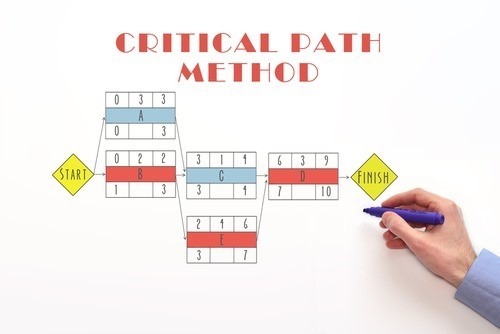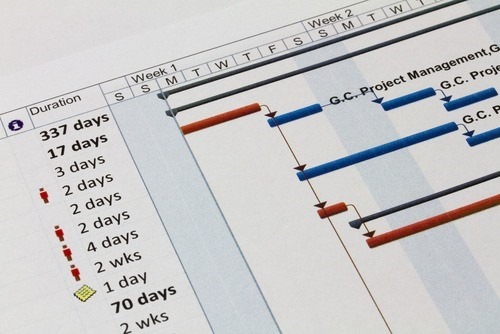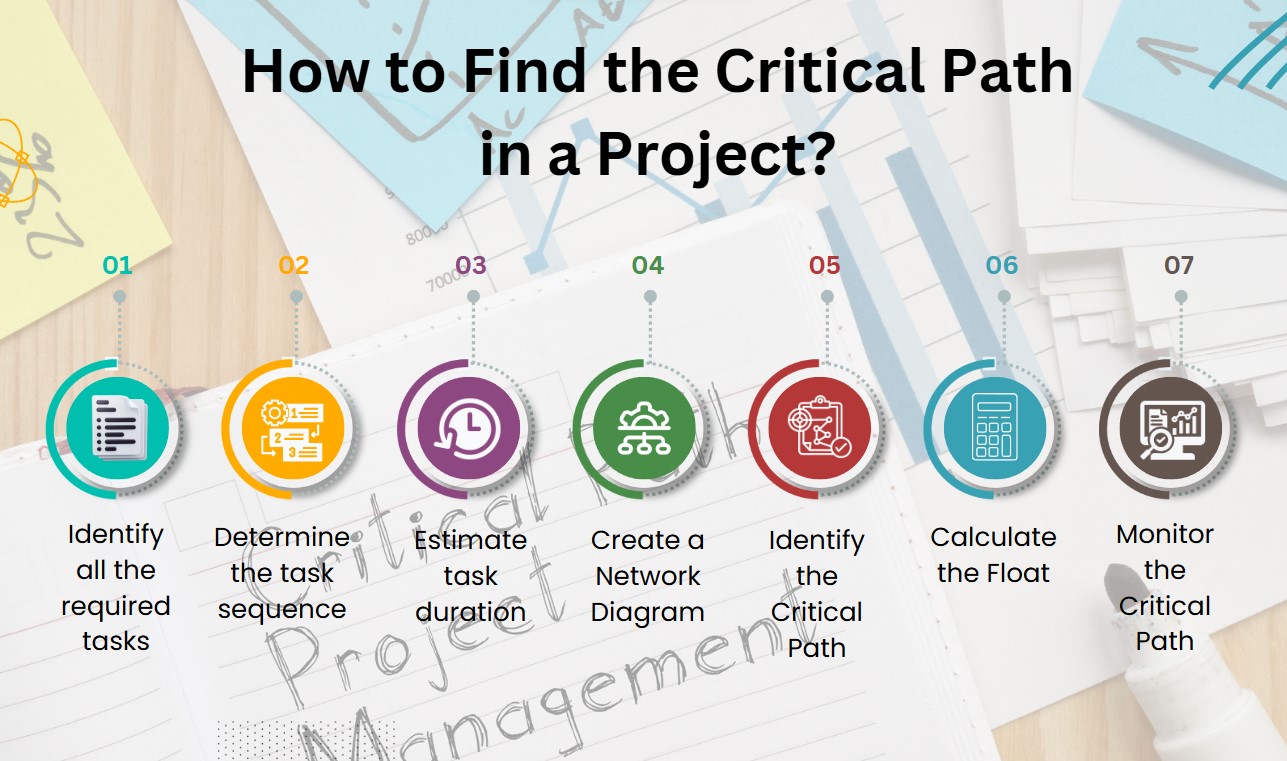Efficient project management hinges on proper planning and precise scheduling. The Critical Path Method (CPM) is a proven technique that helps project managers identify key tasks, allocate resources effectively, and ensure timely project completion. In this blog, we’ll explore the critical role CPM plays in streamlining workflows, optimizing timelines, and driving project success across industries.
Understanding Critical Path Method (CPM)
Project Managers employ the Critical Path Method (CPM), an advanced project management technique, to meticulously plan, schedule, and oversee complex projects. This method involves identifying all necessary tasks, determining their sequential order, and estimating the maximum time needed for project completion. The critical path, the longest sequence of dependent tasks, defines the shortest possible project duration, requiring timely completion to avoid delays.
To ensure on-time project completion, critical tasks must be completed as scheduled. Any delay in these tasks directly affects the overall project timeline. In contrast, non-critical tasks offer some scheduling flexibility, reducing the likelihood of causing delays in project completion.
Critical Path in Project Management

Project owners use the Critical Path Method (CPM) to find the critical path, which is the longest sequence of tasks essential for the project’s success. These critical activities, found on the critical path, are crucial, as any delays in finishing them will directly postpone the entire project. The CPM methodology is employed by project managers to identify and manage this critical path.
Benefits of Using Critical Path Method in Project Management
1. Accurate Estimation and Effective Planning
CPM empowers project managers to make accurate estimations of project completion time, setting realistic expectations and enabling effective planning. With a clear understanding of the critical path, project managers can develop realistic project schedules that anticipate potential setbacks and account for resource constraints.
2. Task Prioritization and Resource Optimization
CPM helps prioritize tasks by emphasizing critical activities that need immediate attention and adequate resources. By visualizing the project flow, project managers can identify non-critical tasks that can be delayed without affecting the overall timeline. This allows for optimized resource allocation and prevents bottlenecks.
3. Improved Communication and Collaboration
Promoting open communication and collaboration, CPM provides a clear visual representation of the project timeline. This ensures all stakeholders are on the same page, fostering a cohesive and efficient team. A shared understanding of task dependencies and critical activities enhances teamwork.
4. Risk Identification and Mitigation
CPM not only helps project owners identify critical tasks but also helps address potential risks by highlighting bottlenecks and delays. This proactive risk management approach minimizes downtime and associated costs, significantly improving project outcomes.
5. Enhanced Visibility and Control
CPM gives project managers better control by closing tracking tasks on the critical path. This allows early detection of potential delays, enabling corrective actions to be taken promptly. The real-time monitoring ensures projects stay on track and achieve their objectives.
CPM vs. PERT
Project owners employ both Critical Path Method and Program Evaluation and Review Technique (PERT) as project management methodologies for planning and scheduling.
CPM relied on a single task duration estimate, providing a fixed model. On the contrary, PERT is more flexible, using a range of possible durations for each task as it’s a probabilistic model.
Below given is a table summarizing the main distinctions between CPM and PERT
| Feature | CPM | PERT |
| Task duration | Known | Unknown |
| Approach | Activity-oriented | Event-oriented |
| Suitable for | Repetitive tasks | Non-repetitive tasks |
| Focus | Time-cost trade-off | Time only |
| Calculation | Tasks’ earliest and latest starts and finishes according to their dependencies | Duration based on three types of estimates—optimistic, pessimistic, and most likely |
Critical Path Method vs. Gantt Charts

Critical Path Method is better when it comes to intricate task dependencies and a detailed project timeline. If you seek a straightforward progress tracker without exhaustive details, a Gantt chart may be more suitable.
Moreover, opt for a Critical Path Method when precise project length prediction is crucial, especially with multiple task dependencies. On the other hand, Gantt charts are ideal for projects with frequent changes, demanding quick adaptability.
Key Components of the Critical Path Method
1. Project Activities
In CPM, activities are labeled as critical and non-critical. Critical tasks are crucial and are part of the critical path, while non-critical tasks include all others. Non-critical tasks are less time-sensitive and provide more scheduling flexibility.
2. Task Dependencies
Activities have natural connections, known as dependencies, requiring a specific order of occurrence. For instance, certain tasks must be completed before others start, or they may need to commence simultaneously.
3. Network Critical Path Diagram
A network Critical Path Diagram visually illustrates a project’s timelines and task connections. It uses nodes and connections to display the task completion order. Critical tasks are often highlighted differently for easier identification.
4. Formulas and Metrics
The critical path method employs different metrics to assess task durations and critical path. These metrics encompass earliest start time (ES), earliest finish time (FT), latest start time (LS), latest finish time (LF), and task duration (t).
The critical path formula consists of two components, which have been elaborated below:
Forward Pass
In the critical path method, the forward pass determines the earliest start (ES) and finish times (EF) for tasks. The ES of the initial task is always 1, and for subsequent tasks, ES equals the EF of the previous task plus 1. EF is calculated as ES plus the task duration minus 1.
EF = ES + t – 1
Backward Pass
In the critical path method, the backward pass determines the latest start (LS) and finish times (LF) for tasks. The LF of the final task remains constant, while for other tasks, LS equals LF of the next task minus 1. LF is calculated as LS plus task duration minus 1.
LF = LS of succeeding activity + t – 1
5. Float/Slack
Float or slack is the maximum delay permissible for a non-critical task without affecting the project’s timeline. Critical tasks possess no float, indicating a float value of 0. Two float types that exist are:
Total Float- The delay that does not affect the project completion date.
Free Float- The delay that does not affect the start date of the subsequent task.
How to Find the Critical Path in a Project?

Step 1- Identify all the required tasks
List all the essential tasks needed for project success, forming a work breakdown structure (WBS). A well-structured WBS acts as a guide for teams handling projects of different complexities.
Step 2- Determine the task sequence
Establish the task sequence by determining the order of execution. Some tasks depend on others, requiring their completion before starting, while some can be done simultaneously. This step is essential for understanding task dependencies and relationships.
Step 3- Estimate task duration
Provide a task estimate for each task, indicating the total time needed for completion from start to completion. Make sure that you are considering potential delays or issues in your estimation.
Step 4- Create a Network Diagram
Use the gathered information to create a network diagram. This visual tool illustrates tasks, their sequence, and dependencies. Each task is a node connected by arrows representing task dependencies.
Step 5- Identify the Critical Path
The critical path is the lengthiest route from a project’s beginning to conclusion, encompassing all crucial tasks in between. Simply put, it’s the sequence of tasks determining the shortest time needed to finish the project. On your network diagram, it is the lengthiest path from the first task to the last.
Step 6- Calculate the Float
A float or slack is the maximum delay for a task without affecting the project deadline. Critical path tasks have zero float, meaning that they can’t be postponed without impacting the project timeline. Non-critical tasks may have some float, providing flexibility in scheduling.
Step 7- Monitor the Critical Path
During the project, closely track tasks on the critical path, as delays directly affect the project timeline. Regularly update and review the critical path to potential issues early and keep the project on track.
Conclusion
In project management, Critical Path Method emerges as a strategic tool, empowering project owners to navigate complex efficiently. CPM is more than a technique; it’s a strategic approach that aids in identifying, prioritizing, and optimizing tasks for effective project deadline management.
The seamless integration of CPM into project management practices not only ensures meticulous planning but also fosters a collaborative environment among team members. The benefits, ranging from accurate estimations to enhanced visibility, make CPM a vital tool for achieving project success.
OnIndus, your project management ally, streamlines the integration of CPM, ensuring precision and efficiency in your projects. Simplify complexities and elevate your project management with OnIndus as your trusted partner.
Wish To Know More?
Also Read:
- 10 Best Construction Project Management Software For 2024
- 10 Best Construction Scheduling Software in 2024
FAQs
1. What is the critical path method (CPM)?
Critical path method (CPM) refers to a tool employed in scheduling a project for the purposes of determining the longest chain of dependent tasks in a given project. Through analyzing such tasks, CPM project management can define the least time required to execute the project. Knowing what the critical path method ensures that teams will concentrate on major activities that directly or indirectly affect deadlines.
2. What is the Critical Path in Project Management?
The critical path in project management is the sequence of tasks that need to be accomplished in a timely manner to avoid delaying the entire project. Critical path project management points out this path and helps managers prioritize activities with zero float. It ensures efficient allocation of resources, and project timelines are maintained within execution.
3. What is the critical path formula?
The critical path formula is based on calculating the longest path of planned tasks by using:
Critical Path = Longest Duration Path Through the Network Diagram.
It requires determining the earliest start (ES), the earliest finish (EF), the latest start (LS), and the latest finish (LF) for each task. This forms the basis of critical path analysis in project management to pinpoint key time-sensitive tasks.
4. What is a CPM schedule?
A CPM schedule presents the project timeline by listing all the tasks, their duration, dependencies, and the critical path. Being used in CPM project management, it helps monitor progress and avoids delays in necessary tasks. The CPM schedule is a flexible tool that assists in project planning and resource scheduling in the delivery of projects within the stipulated time.
5. What are the benefits of the CPM in Project Management?
CPM provides a clear insight into the dependency of tasks, project schedules, and potential bottlenecks in project management. It aids in putting tasks that are essential in order, utilizing resources, and handling delays in an adequate way. With critical path methodology, teams can ensure and deliver a project within a set time while giving flexibility in handling their non-critical activities with float time.
6. How does CPM differ from PERT?
CPM is concerned with the durations of tasks and is used for projects with predictable activities. On the other hand, PERT is concerned with estimates in uncertain or research-based projects. The critical path method in project management employs fixed durations, making it appropriate for use in construction and engineering. PERT examines several time scenarios and makes it better for experimental projects.
7. What steps are involved in calculating the critical path?
To calculate the critical path, follow these steps:
- List all tasks and dependencies
- Estimate task durations
- Create a network diagram.
- Determine the earliest start/finish (ES/EF)
- Determine the latest start/finish (LS/LF)
- Identify the longest path with zero float.
This process forms the foundation of critical path analysis in project management.

